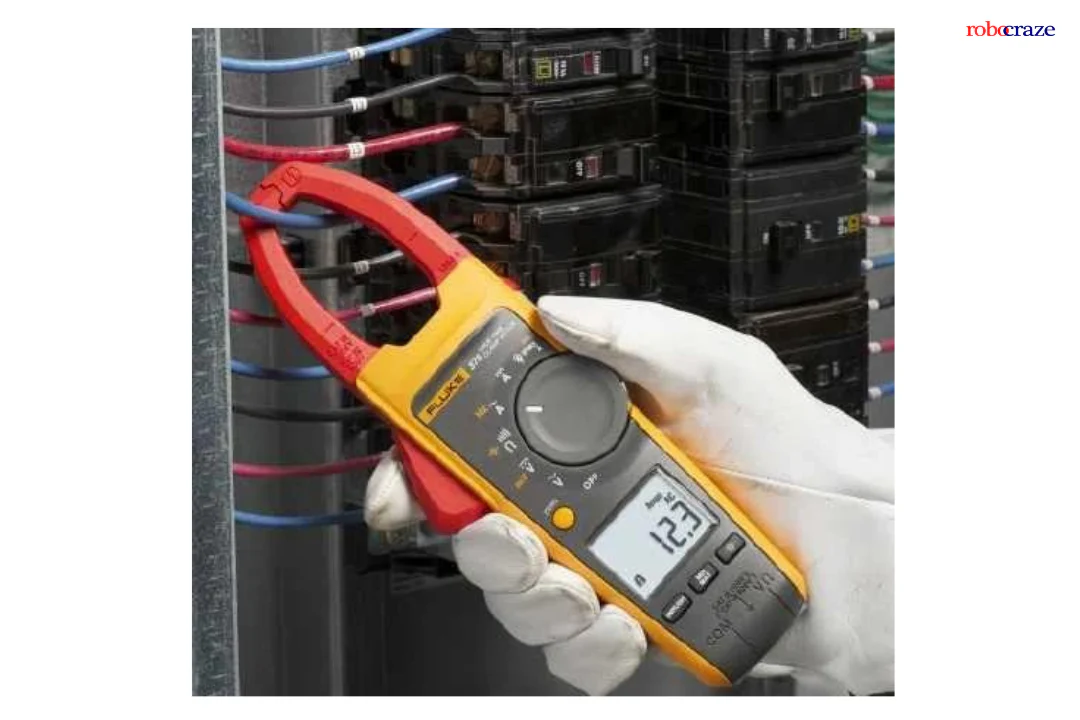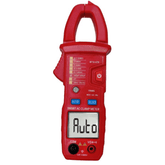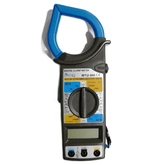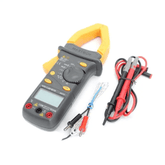What is clamp meter?
Summary
Discover the versatility of clamp meters with our comprehensive guide. Start with an introduction to clamp meters and their role in measuring electrical parameters without direct contact. Learn about the various measurements they can perform, such as current, voltage, and resistance. Explore the key benefits of using clamp meters, including safety and convenience. Get practical tips on how to use a clamp meter effectively. Understand the different types of clamp meters and their specific applications across industries. Perfect for electricians, technicians, and DIY enthusiasts, this guide will enhance your electrical measurement skills. Click now to master the use of clamp meters!
Introduction
A clamp meter is an indispensable tool in the arsenal of electricians, technicians, and engineers. It uniquely combines the functionalities of a basic digital multimeter and a current sensor, enabling users to measure electrical currents without having to make direct contact with live wires.

This feature not only enhances safety but also simplifies the process of diagnosing and troubleshooting electrical systems. With technological advancements, modern clamp meters have evolved to offer a wide array of measurements, making them a versatile tool for various electrical applications.
What Can Clamp Meters Measure
Clamp meters are primarily designed to measure electrical currents, but their capabilities extend far beyond this basic function. Here’s a detailed look at what modern clamp meters can measure:
Alternating Current (AC)
The ability to measure AC is a fundamental feature of clamp meters. This is crucial for checking household wiring, industrial equipment, and other systems where AC is prevalent.
Direct Current (DC)
Many clamp meters can also measure DC, making them useful for automotive diagnostics, solar power installations, and battery systems.
Voltage
Modern clamp meters can measure both AC and DC voltage, providing comprehensive data about electrical circuits. This feature is essential for verifying that systems are operating within their specified voltage ranges.
Resistance
The ability to measure resistance helps in identifying issues like short circuits and verifying the integrity of electrical components.
Continuity
This function checks if a circuit is complete, which is vital for troubleshooting electrical connections.
Capacitance
Measuring capacitance is useful for diagnosing problems in capacitors found in electronic circuits.
Frequency
The frequency measurement capability is essential for ensuring that systems operate at the correct frequency, particularly in industrial applications.
Temperature
Some advanced clamp meters come with temperature measurement functions, which can be critical for diagnosing overheating issues in electrical systems.
Key Benefits of Clamp Meters
The unique design and capabilities of clamp meters offer several advantages:

Safety
One of the most significant benefits of using a clamp meter is its non-contact current measurement capability. This feature greatly reduces the risk of electric shock since there is no need to touch live wires directly. Users can measure current by simply clamping the meter around a conductor.
Convenience
Clamp meters are compact, portable, and easy to use. Their ergonomic design allows for one-handed operation, making them ideal for on-site measurements where ease of use is crucial.
Versatility
With the ability to measure multiple electrical parameters, clamp meters are versatile tools. They eliminate the need for carrying multiple instruments, thereby simplifying the toolkit of electricians and technicians.
Efficiency
Clamp meters provide quick and accurate readings, which enhances the efficiency of electrical diagnostics and troubleshooting processes. This is particularly beneficial in time-sensitive situations where rapid assessments are necessary.
Non-intrusive
Since clamp meters measure current without having to disconnect or break the circuit, they provide a non-intrusive means of testing live systems. This is especially valuable in industrial settings where downtime can be costly.
How to Use a Clamp Meter
Using a clamp meter effectively involves a few straightforward steps:

- Preparation: Before using a clamp meter, ensure that it is properly calibrated and in good working condition. Familiarize yourself with its functions and settings.
- Turn on the Clamp Meter: Set the device to the appropriate measurement mode. For current measurement, select either AC or DC current, depending on what you need to measure.
- Open the Clamp Jaw: Squeeze the lever to open the clamp jaw. The clamp jaw is designed to encircle a conductor, allowing the meter to measure the current flowing through it.
- Position Around the Conductor: Place the opened clamp jaw around the conductor you wish to measure. Make sure the conductor is centered within the jaw for the most accurate reading. It is important to avoid clamping around multiple conductors simultaneously, as this can lead to incorrect readings.
- Read the Measurement: Observe the reading displayed on the meter. Most clamp meters have a digital display that shows the measured value. Ensure that the conductor remains in the jaw and stable while taking the reading to maintain accuracy.
- Complete the Measurement: After obtaining the reading, release the lever to close the jaw and remove the meter from the conductor. Turn off the clamp meter when not in use to conserve battery life.
Types of Clamp Meters
Clamp meters come in various types, each designed for specific applications:
AC Clamp Meters

These are the most common type and are designed to measure alternating current. They are widely used in residential, commercial, and industrial settings to monitor and troubleshoot electrical systems that operate on AC.
AC/DC Clamp Meters

These versatile meters can measure both AC and DC currents. They are ideal for applications that involve both types of current, such as automotive diagnostics, solar power systems, and certain industrial equipment.
Flexible Clamp Meters

Featuring a flexible coil, these meters are designed to measure current in large conductors or in confined spaces where traditional clamp jaws cannot fit. They are particularly useful in industrial environments with complex wiring layouts.
Leakage Clamp Meters

These specialized meters are designed to measure small leakage currents. They are essential for detecting insulation failures and ensuring that electrical systems are safe and compliant with safety standards.
Power Clamp Meters

In addition to current measurement, these meters can measure power-related parameters such as power factor, active power, and reactive power. They are useful for energy audits and efficiency analysis in electrical systems.
Applications of Clamp Meters
Clamp meters are used in a wide range of applications across various industries:
- Electrical Maintenance and Troubleshooting: Electricians use clamp meters to diagnose issues in wiring, circuit breakers, and electrical panels. They help in identifying overloads, short circuits, and other electrical faults.
- HVAC Systems: HVAC technicians use clamp meters to measure the current in heating, ventilation, and air conditioning units. This helps ensure that these systems operate efficiently and do not draw excessive current.
- Automotive Industry: In automotive diagnostics, clamp meters are used to test electrical systems, including the health of batteries, alternators, and charging systems. They are essential for maintaining the performance and reliability of vehicles.
- Industrial Equipment Maintenance: In industrial settings, clamp meters help monitor and maintain large machinery and equipment. They ensure that motors, transformers, and other electrical components operate within their specified current ranges.
- Energy Audits: Clamp meters are used in energy audits to measure the current consumption of different appliances and systems. This information is crucial for identifying opportunities for energy savings and efficiency improvements.
- Solar Power Systems: For solar installations, clamp meters measure the current produced by solar panels and flowing through inverters. This helps in optimizing the performance and maintenance of solar power systems.
Choosing the Right Clamp Meter
Selecting the right clamp meter involves considering several factors:
- Measurement Needs: Identify the types of measurements you will be performing most frequently. Ensure the clamp meter you choose can measure those parameters (e.g., AC, DC, voltage, resistance).
- Accuracy and Resolution: Look for clamp meters with high accuracy and resolution. Accurate readings are crucial for effective diagnostics and troubleshooting.
- Jaw Size and Flexibility: Consider the size of the conductors you will be measuring. Ensure the clamp jaw can accommodate them. Flexible clamp meters are a good choice for large or hard-to-reach conductors.
- Additional Features: Some clamp meters come with extra functionalities like data logging, Bluetooth connectivity, and thermal imaging. These features can enhance the utility of the clamp meter for specific applications.
- Durability and Build Quality: Choose a clamp meter that is robust and built to withstand the conditions in which you will be using it. This is particularly important for industrial and outdoor applications.
- Budget: Clamp meters are available in a range of prices. Balance the features you need with your budget to choose a meter that offers the best value.
Conclusion
Clamp meters are invaluable tools for anyone working with electrical systems. Their unique ability to measure current without direct contact with live wires enhances safety and convenience, making them a preferred choice for professionals and DIY enthusiasts alike.
Understanding the different types of clamp meters and their applications can help you select the right one for your needs, ensuring accurate and reliable measurements every time.











